#Academy Award 1934
Text













The 7th Academy Awards was another year with absolutely no upset. After investigating the Best Picture nominees and their characteristics, I landed on The Thin Man. Strong ratings, comedy, well-known, etc.
It Happened One Night is often credited as the first screwball comedy. Variety agreed that It Happened One Night was successful due to the proper combination of the acting, dialog, and direction. No one aspect was overly strong, but the combination made it a winner.
I very much enjoyed this one. It is funny and fast-paced with a basic storyline. Plus I love the "there are only two beds in here because it is a 1930s film but they are DEFINITELY fucking" scene.
At the Oscars, It Happened One Night took home all five of what is now know as the "Big Five": Best Picture, Director, Screenplay, Actor, and Actress. In the history of the Academy Awards, only three films have taken home the entire Big Five.
The Thin Man feels like a classic comedy/whodunit sort of film, plus there's a DOG! I was able to find plenty of fun ads for it during my search. If it's the gayest film of the season, you know I will be tuning in.
The Thin Man checks all my boxes for a good film, but it didn't stand out to me in any particular way. I enjoyed it.
The Thin Man took home zero Oscars (which included nominees for 4 of the Big Five), but received similar accolades and sees equal current reception to It Happened One Night.
Unofficial Review: It Happened One Night earned the Oscar. But The Thin Man is still worth a view!
Both films are available on archive.org.
#oscars#academy awards#7th academy awards#it happened one night#it happened one night 1934#the thin man#the thin man 1934#1930s#1930s film#pre code film#oscarupsets
0 notes
Text

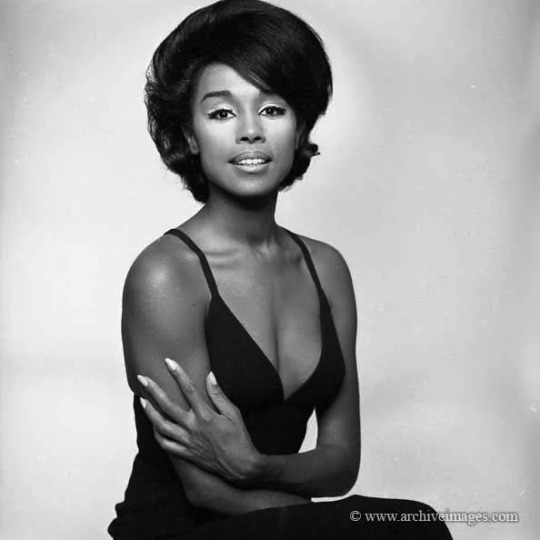
Propaganda
Devika Rani (Achhut Kanya)—She was grandniece of Rabindranath Tagore (laureate). She was sent to boarding school in England at age nine and grew up there. After completing her schooling, she joined the Royal Academy of Dramatic Art (RADA) and the Royal Academy of Music to study acting and music, at a time when aristocratic women did not enter showbiz. She studied filmmaking in Berlin. It is well known that she underwent training at the UFA Studios in the art and technique of acting under Eric Pommer, and other aspects of film production including costume and set designing and make-up, under eminent directors like GW Pabst, Fritz Lang, Emil Jannings and Josef von Sternberg. She is also reported to have worked with Marlene Dietrich. She had a multi-faceted personality and took on many responsibilities of film production at Bombay Talkies, a studio that she co-founded with Himanshu Rai in Mumbai in 1934. She often took care of hair and make up, supervised set design and editing, scouted for new talent and mentored them. She was the face of Bombay Talkies, and also the reason behind the political and financial backing the studio received, at a time when even women from red light districts refused to work as actresses. She was the first recipient of the Dadasaheb Phalke Award, when it was instituted in 1970.
Diahann Carroll (Paris Blues, Carmen Jones, Porgy and Bess)— Face of an angel. She had the range. She brought chemistry with every romance she portrayed. She also had a great fashion sense, and was so pretty Mattel made a doll based off of her.
This is round 4 of the tournament. All other polls in this bracket can be found here. Please reblog with further support of your beloved hot sexy vintage woman.
[additional propaganda submitted under the cut.]
Devika Rani:
Achhut Kanya (1936) is the only one of hers I've seen but hot DAMN

Diahann Carroll:

Another groundbreaking black actress, although she might be better remembered for her television roles. She was also an activist and worked with charities to support women in need.
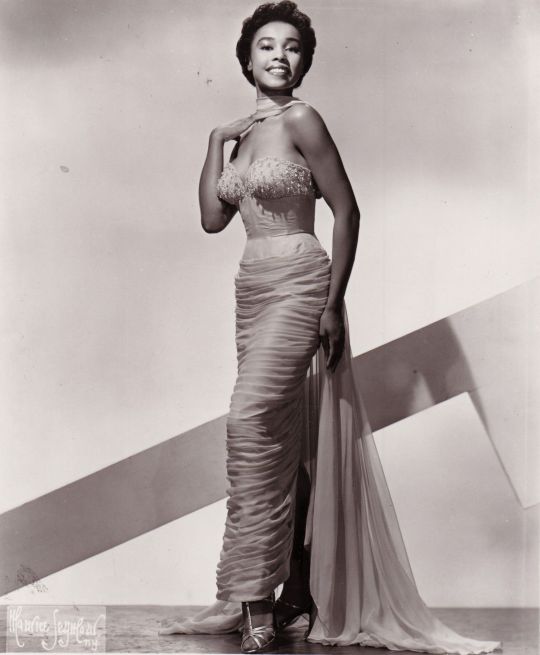
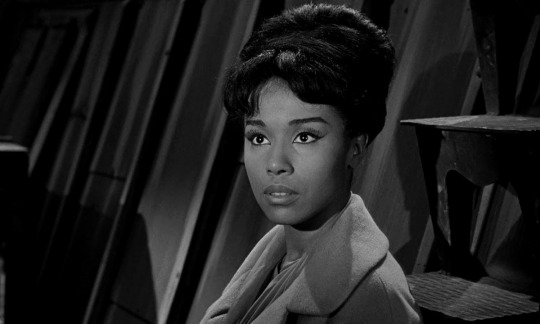

here she is hanging out with shadow prince anthony perkins :3


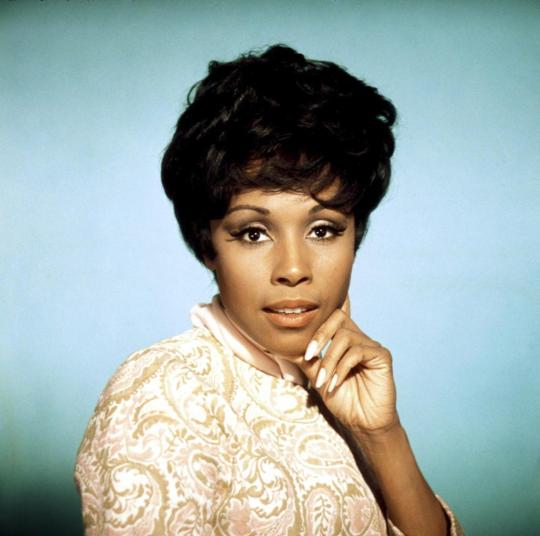

168 notes
·
View notes
Text

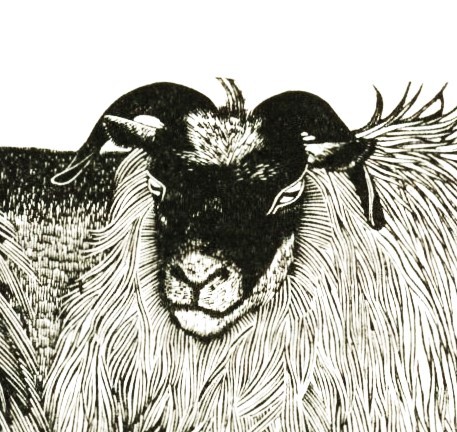
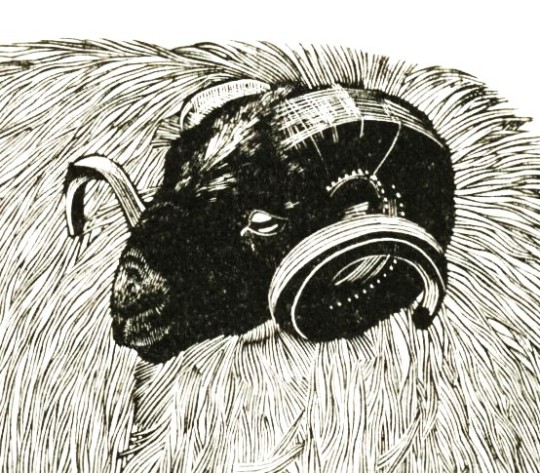

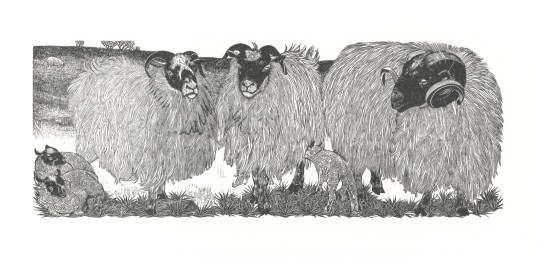
Wood Engraving Wednesday
SARAH VAN NIEKERK
English artist Sarah Van Niekerk (1934 - 2018) was an award-winning Illustrator and wood engraver, a member of the Society of Wood Engravers (SWE), and the Society's chair, 1995-1998. This print, Rams, was printed from the original block in 2020 Vision: Nineteen Wood Engravers, One Collector, and the Artists Who Inspired Them, printed in 2020 by Patrick Randle’s Nomad Letterpress at the Whittington Press in Cheltenham, Gloucestershire, in an edition of 340 copies for the 100th anniversary of the Society of Wood Engravers. Unfortunately, Van Niekerk died during the planning of the book and her daughter Jess wrote the text for mother's entry and helped select the block to be printed.
Sarah Van Niekerk attended the Central School of Arts and Crafts (1951-1954) where she studied with wood engraver and sculptor Gertrude Hermes who greatly influenced her work. She continued her education at the Slade School (1955-1956) and much later taught wood engraving at the Royal Academy of Art (1976-1986) and the City and Guilds Art School (1979-1998), and for many years was a tutor at West Dean College. Besides being a member of SWE, she was also a Fellow of the Royal Society of Painter-Printmakers and a Royal West of England Academician.

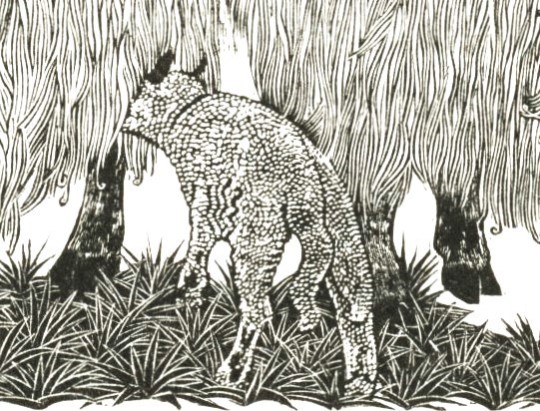
View another post with work by Sarah Van Niekerk.
View a post with work by Van Niekerk's mentor Gertrude Hermes.
View other posts from 2020 Vision.
View more posts with women wood engravers.
View more posts with wood engravings!
#Wood Engraving Wednesday#Women's History Month#wood engravings#wood engravers#women wood engravers#Sarah Van Niekerk#Rams#sheep#lambs#2020 Vision#Nomad Press#Whittington Press#Patrick Randle#Society of Wood Engravers#letterpress printing#fine press books#artistic influences#Gertrude Hermes
134 notes
·
View notes
Text
Hermann Goring
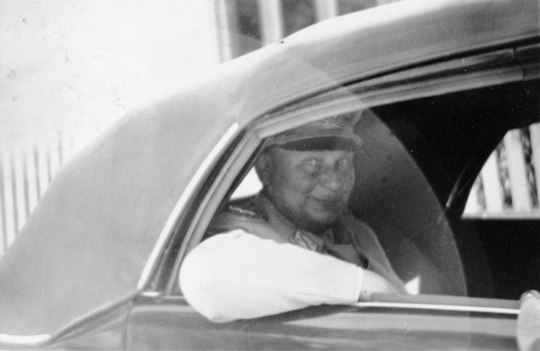
This is Hermann Goring, the Reich minister for Aviation, timeline:
1893: He was born in Rosenheim, 12 January.
1895: Albert, his younger brother, was born.
1904: He was sent to boarding school, where the food was poor and the discipline was harsh.
1909: He was sent to a military academy at Berlin Lichterfelde, from which he graduated with distinction.
1912: He joined the Prince Wilhelm Regiment (112th Infantry) of the Prussian army in 1912.
1913: His father died.
1913: He was admitted to officers' school.
1914: The First World War began.
1914: He served with his infantry regiment in the region of Mülhausen, a garrison town just a mile from the French border.
1915: He passed to the newly formed Luftstreitkräfte, the air force of the German Empire.
1915: He and his friend Loerzer were assigned as a team to FFA 25 in the Crown Prince's Fifth Army. They flew reconnaissance and bombing missions.
1915: He received the Iron Cross first class.
1918: When Manfred Von Richthofen, the legendary Red Baron, died Goring succeeded him as his successor.
1918: Highly decorated, he was also awarded the medal for valor Pour le Mérite, the highest German military decoration at the time.
1918: The First World War ended.
1920: He met his first wife, Carin von Kantzow.
1922: Göring went to Munich to study political science at university.
1922: He met Hitler and he joined the Nazi Party.
1923: He was given command of the Sturmabteilung (SA) as Oberster SA-Führer
1923: He married Carin.
1923: He take part in the failed Munich Putsch, and he was wounded in the groin.
1924: He and his wife visited Rome, passing through Florence and Siena. Göring met Mussolini.
1927: Thanks to a general amnesty, he and his wife were able to repatriate.
1928: He was elected deputy to the Reichstag.
1931: His wife died.
1931: He was sent on a mission to the Vatican, where he met Pope Pius XI.
1932: He was elected president of the Reichstag and from that position supported Hitler's bid for chancellor.
1933: He was one of the main actors in the Reichstag fire, used by the Nazis to eliminate any opposition.
1933: He was appointed Minister-President of the Free State of Prussia.
1933: He created the Gestapo.
1933: Adolf Hitler was appointed Reich Chancellor.
1933: He was appointed minister for aviation.
1933: He was appointed General der Infanterie by President von Hindenburg.
1933: He built his home called Carinhall in honor of his first wife.
1934: He granted control of the Gestapo to the SS.
1934: He was one of the main instigators of the Night of the Long Knives together with Himmler.
1934: He was appointed Reich Minister for Forestry.
1935: He married his second wife Emmy Sonnemann.
1935: He founded the Luftwaffe.
1936: He was appointed Reich Plenipotentiary for the Four-Year Plan.
1936: He also became responsible for the plan to confiscate the assets of German Jews, which was supposed to finance the rearmament of Germany.
1938: His only child, Edda, was born.
1938: With the help of Himmler's Gestapo, he plotted first against von Blomberg and then with his successor, von Fritsch, causing them both to fall
1938: He played an important role in the Anschluss, the union between the Third Reich and Austria.
1939: He created the Reich Central Office for Jewish Emigration in Berlin, with the task of promoting the departure of Jews from all German territories, and placed it under the direction of Heydrich.
1939: Hitler designates him as his successor.
1939: The Second World War began.
1940: Göring was given a renewed mandate to direct the "Four Year Plan" for the next four years, which made him responsible for the war economy.
1940: By a decree on 19 July , Hitler promoted Göring to the rank of Reichsmarschall des Grossdeutschen Reiches (Reich Marshal of the Greater German Reich), a special rank which made him senior to all other army and Luftwaffe field marshals.
1940: He gave directives for the plunder of the occupied territories, mainly France.
1941: It was Göring who gave, on Hitler's behalf, the order to prepare a "final solution to the Jewish problem" to Reinhard Heydrich.
1945: He was arrested by the Allies.
1946: He was tried at the Nuremberg trials.
1946: He committed suicide to avoid execution.
Sources:
Wikipedia: Hermann Goring
Military Wiki: Hermann Goring
❗❗I DON'T SUPPORT NAZISM, FASCISM OR ZIONISM IN ANY WAY, THIS IS AN EDUCATIONAL POST❗❗
43 notes
·
View notes
Text

ALAN ARKIN (1934-Died June 29th 2023,at 89).
American actor, director, and screenwriter. In a career spanning eight decades, he received various accolades, including an Academy Award, a British Academy Film Award, a Golden Globe Award, and a Tony Award. For his work on television, he received six Primetime Emmy Award nominations.
Arkin began his career on the Broadway stage, starring as David Kolowitz in the Joseph Stein play Enter Laughing in 1963, for which he won the Tony Award for Best Featured Actor in a Play. He returned the following year acting in the comedic play Luv (1964). For his work directing Neil Simon's 1971 comedic play The Sunshine Boys, he was nominated for the Tony Award for Best Direction of a Play.
Arkin gained stardom with his roles in the films The Russians Are Coming, the Russians Are Coming (1966), Wait Until Dark (1967), The Heart is a Lonely Hunter (1968), Popi (1969), Catch-22 (1970), and The In-Laws (1979). He later took on supporting roles in Edward Scissorhands (1990), Glengarry Glen Ross (1992), Grosse Point Blank (1997), Thirteen Conversations About One Thing (2001), Sunshine Cleaning (2007), Get Smart (2008), and Argo (2012). For his performance as a foul-mouthed grandfather in Little Miss Sunshine (2006), he won the Academy Award for Best Supporting Actor.
Known for his roles on television, memorable performances included Leon Felhendler in Escape from Sobibor (1987), and as Harry Rowen in The Pentagon Papers (2003) for which he earned Primetime Emmy Award for Outstanding Lead Actor in a Limited or Series or Movie nominations. From 2015 to 2016, he voiced J.D. Salinger in the Netflix animated series BoJack Horseman. From 2018 to 2019, he starred as a talent agent in the Netflix comedy series The Kominsky Method, earning two consecutive nominations for the Primetime Emmy Award for Outstanding Supporting Actor in a Comedy Series.
His sons Adam and Matthew are also actors.Adm is best known for playing Dr Aaron Shutt,in the CBS medical drama,Chicago Hope. Alan Arkin - Wikipedia
#Alan Arkin#American Actors#Actors#Little Miss Sunshine#Minion: The Rise of Gru#Stand Up Guys#Notable Deaths in June 2023#Notable Deaths in 2023
84 notes
·
View notes
Text
Fredi Washington

Fredericka Carolyn "Fredi" Washington (December 23, 1903 – June 28, 1994) was an American stage and film actress, civil rights activist, performer, and writer. Washington was of African American descent. She was one of the first Black Americans to gain recognition for film and stage work in the 1920s and 1930s. Washington was active in the Harlem Renaissance, her best known role being Peola in the 1934 film version of Imitation of Life, where she plays a young light-skinned Black woman who decides to pass as white. Her last film role was in One Mile from Heaven (1937), after which she left Hollywood and returned to New York to work in theatre and civil rights activism.
Fredi Washington was born in 1903 in Savannah, Georgia, to Robert T. Washington, a postal worker, and Harriet "Hattie" Walker Ward, a dancer. Both were of African American and European ancestry. Washington was the second of their five children. Her mother died when Fredi was 11 years old. As the oldest girl in her family, she helped raise her younger siblings, Isabel, Rosebud, and Robert, with the help of their grandmother. After their mother's death, Fredi and her sister Isabel were sent to the St. Elizabeth's Convent School for Colored Girls in Cornwells Heights, near Philadelphia, Pennsylvania.
While still in school in Philadelphia, Washington's family moved north to Harlem, New York. Washington graduated from Julia Richman High School in New York City.
Washington's entertainment career began in 1921 as a chorus girl in the Broadway musical Shuffle Along. She was hired by dancer Josephine Baker as a member of the "Happy Honeysuckles," a cabaret group. Baker became a friend and mentor to her. Washington's collaboration with Baker led to her being discovered by producer Lee Shubert. In 1926, she was recommended for a co-starring role on the Broadway stage with Paul Robeson in the play Black Boy. She quickly became a popular, featured dancer, and toured internationally with her dancing partner, Al Moiret.
Washington turned to acting in the late 1920s. Her first movie role was in Black and Tan (1929), in which she played a Cotton Club dancer who was dying. She acted in a small role in The Emperor Jones (1933) starring Robeson. In 1933, Washington married Lawrence Brown, the trombonist in Duke Ellington's jazz orchestra. That marriage ended in divorce. Washington also played Cab Calloway's love interest in the musical short Cab Calloway's Hi-De-Ho (1934).
Her best-known role was in the 1934 movie Imitation of Life. Washington played a young light-skinned Black woman who chose to pass as white to seek more opportunities in a society restricted by legal and social racial segregation. As Washington had visible European ancestry, the role was considered perfect for her, but it led to her being typecast by filmmakers. Moviegoers sometimes assumed from Washington's appearance—her blue-gray eyes, pale complexion, and light brown hair—that she might have passed in real life. In 1934, she said the role did not reflect her off-screen life, but "If I made Peola seem real enough to merit such statements, I consider such statements compliments and makes me feel I've done my job fairly well." She told reporters in 1949 that she identified as Black "...because I'm honest, firstly, and secondly, you don't have to be white to be good. I've spent most of my life trying to prove to those who think otherwise ... I am a Negro and I am proud of it."[7] Imitation of Life was nominated for an Academy Award for Best Picture, but it did not win. Years later, in 2007, Time magazine ranked it as among "The 25 Most Important Films on Race."
Washington's experiences in the film industry and theater led her to become a civil rights activist. In an effort to help other Black actors and actresses find more opportunities, in 1937 Washington co-founded the Negro Actors Guild of America, with Noble Sissle, W. C. Handy, Paul Robeson, and Ethel Waters. The organization's mission included speaking out against stereotyping and advocating for a wider range of roles. Washington served as the organization's first executive secretary. She was also heavily involved with the National Association for the Advancement of Colored People, widely known as the NAACP. While working with the NAACP, Fredi fought for more representation and better treatment of Black actors in Hollywood because she was one of the few Black actors in Hollywood who had some influence with white studio executives. Aside from working with those organizations to fight for the rights of Black actors, Washington also advocated for the federal protection of Black Americans and was a lobbyist for the Dyer Anti-Lynching Bill, which the NAACP supported.
Despite receiving critical acclaim, she was unable to find much work in the Hollywood of the 1930s and 1940s; Black actresses were expected to have dark skin, and were usually typecast as maids. Directors were concerned about casting a light-skinned Black actress in a romantic role with a white leading man; the film production code prohibited suggestions of miscegenation. Hollywood directors did not offer her any romantic roles. As one modern critic explained, Fredi Washington was "...too beautiful and not dark enough to play maids, but rather too light to act in all-Black movies..."
Washington was a theater writer, and the entertainment editor for The People's Voice (1942–1948), a newspaper for African Americans founded by Adam Clayton Powell Jr., a Baptist minister and politician in New York City who was married to her sister Isabel Washington Powell. She was outspoken about racism faced by African Americans and worked closely with Walter White, then president of the NAACP, to address pressing issues facing Black people in America.
In 1952, Washington married a Stamford dentist, Hugh Anthony Bell, and moved to Greenwich, Connecticut.
Fredi Washington Bell died, aged 90, on June 28, 1994. She died from pneumonia following a series of strokes at St. Joseph Medical Center in Stamford, Connecticut.
23 notes
·
View notes
Text

Dame Maggie Smith was born on this day of December 28th in 1934 making her 89 years old today. She is one of Britain's most prolific and well-known actresses. In her career, she has received two Academy Awards, five BAFTA Awards, four Emmy Awards, three Golden Globes, and a Tony Award.
27 notes
·
View notes
Text
Rukmini Devi Arundale
Rukmini Devi Arundale, born on February 29, 1904, in Madurai, Tamil Nadu, served as a catalyst in revitalising the traditional Indian dance form of Bharatanatyam and establishing its prominence. Born into a Brahmin family with deep connections to the Theosophical Society, Rukmini was exposed to humanist ideals from an early age. Her marriage to George Arundale, a theosophist and educator, further fuelled her interest in theosophy and dance.
While travelling with her husband and Annie Besant, Rukmini learned of Western ballet and began studying ballet at the suggestion of the famous ballerina Anna Pavlova. Pavlova also encouraged her to explore classical Indian dance forms, which allowed Rukmini to pursue Bharatanatyam
To challenge the norms and re-establish the artistic integrity of the dance, Rukmini undertook formal education at the Bharatnatyam master Pandanalur Meenakshi Sundaram Pillai.
In 1935, at the age of 31, Rukmini made her debut in Bharatanatyam, defying societal expectations and setting a precedent for upper-class women to participate in the dance form. Witnessing the transformative power of Bharatanatyam, she established the International Academy of the Arts in Adyar in 1936, later renamed Kalakshetra. Through Kalakshetra, Rukmini aimed to teach and popularise Bharatanatyam through this institution, saying that she felt she had been "ushered into a new world of rhythmic beauty and meaning."
Rukmini Devi Arundale's contributions extended beyond dance. In 1934, she founded educational institutions that blended theosophy and traditional Hindu values. Her vision for Kalakshetra went beyond preserving Bharatanatyam; it became a hub for various Indian traditions and the propagation of theosophical ideals. Her efforts earned her accolades, including the Padma Bhushan in 1956 and the Sangeet Natak Akademi Award in 1967. As an animal lover, she chaired the Animal Welfare Board and played a key role in passing the Prevention of Cruelty to Animals Act in 1952. In the same year, she made history as the first ever woman in Indian history to be nominated as the Rajya Sabha member
In 1977, she declined the offer to become the President of India from Prime Minister Morarji Desai post the death of President Fakhruddin Ali Ahmed. In a 2013 speech at Kalakshetra, President Pranab Mukherjee delivered the first Rukmini Devi Memorial Lecture, emphasising on the significance she has had on the revival of classical dance and her commitment to the cultural renaissance of India.
further links:
#bharatanatyam#rukmani devi arundale#women in history#indian women in history#india#classical dance#history
16 notes
·
View notes
Text
youtube
A lot of adjectives come to mind when one mentions Fred Astaire: debonair, poised, elegant, captivating. And nouns too, especially grace, sophistication and talent. Fred Astaire is regarded by many as the greatest popular music dancer of all time. Astaire is usually remembered for his pairings with Ginger Rogers, who starred in several films with him, including Swing Time (1936).
Light on his feet, Fred Astaire revolutionized the movie musical with his elegant and seemingly effortless dance style. He may have made dancing look easy, but he was a well-known perfectionist, and his work was the product of endless hours of practice.
Astaire started performing as a child, partnering up with his older sister Adele. The two toured the vaudeville circuit before making it to Broadway in 1917. Among their many productions the brother-sister team starred in the 1927 George and Ira Gershwin musical Funny Face. For all his early success, though, career in the movies eluded Astaire. He had done a screen test, but he failed to attract any interest. A studio executive wrote at the time, "Can't sing. Can't act. Slightly balding. Can dance a little."
In 1932, Astaire suffered a career setback. His sister Adele retired from the act to marry a British aristocrat. He floundered a bit professionally without his usual partner, but then decided to go to Hollywood to try once more to break into film.
Finally, Astaire landed a small role in 1933's Dancing Lady with Joan Crawford. The role opened the door to new opportunities, and Astaire signed a contract with RKO Radio Pictures. He was matched up with another Broadway talent, Ginger Rogers, for Flying Down to Rio, also in 1933. Cast as supporting players, their dance number stole the movie. Astaire and Rogers appeared in several more films together, including The Gay Divorcee (1934) and Top Hat (1935). The duo became film's most beloved dance team. Their routines featured a hybrid of styles—borrowing elements from tap, ballroom and even ballet. Katharine Hepburn once described what each of them brought their successful partnership: "Fred gave Ginger class, and Ginger gave Fred sex."
Off-screen, Astaire was known for his relentless pursuit of perfection. He thought nothing of rehearsing a scene for days, and Rogers eventually tired of the grueling schedule. The pair went their separate ways after 1939's The Story of Vernon and Irene Castle. Years later, they reunited once more for 1949's The Barkleys of Broadway.
After the split with Rogers in 1939, Astaire performed with such leading ladies as Rita Hayworth, Cyd Charisse, Judy Garland, Leslie Caron and Audrey Hepburn. Some of his most famous musicals from his later career include Easter Parade with Garland and Funny Face with Hepburn.
As his movie roles tapered off, Astaire worked more in television. He often appeared as himself for special tribute shows. Astaire had a growing interest in dramatic parts, working on such series as Dr. Kildare. He also worked with another legendary dancer, Gene Kelly, on the documentary That's Entertainment, which explored the golden era of the movie musical.
Around this time, Astaire received his only Academy Award nomination for his supporting role in the 1974 disaster film The Towering Inferno. He also won an Emmy Award for his work on the television special A Family Upside Down in 1978. More accolades soon followed. Astaire received a Lifetime Achievement Award from the American Film Institute in 1981.
A few years later, Astaire was hospitalized for pneumonia. He died on June 22, 1987, in Los Angeles, California. With his passing, Hollywood had lost one of its greatest talents. Former actor and president Ronald Reagan, upon learning the news, called Astaire "an American legend" and "the ultimate dancer." Rogers said Astaire "was the best partner anyone could ever have."
I hope you enjoy this as much as I have.
Daily inspiration. Discover more photos at Just for Books…?
20 notes
·
View notes
Photo

TV Guide - November 2 - 8, 1963
Wilfred Bailey Everett Bixby III (January 22, 1934 – November 21, 1993) professionally known as Bill Bixby, Film and television actor, director, producer, and frequent game-show panellist.
Bixby's career spanned more than three decades, including appearances on stage, in films, and on television series. He is known for his roles in the CBS sitcom My Favorite Martian as Tim O'Hara, in the ABC sitcom The Courtship of Eddie's Father as Tom Corbett, in the NBC crime drama series The Magician as stage Illusionist Anthony Blake, and the CBS science-fiction drama series The Incredible Hulk as Dr. David Banner. He also worked with Mariette Hartley in his final series, Goodnight, Beantown, (Wikipedia)
Herman Raymond Walston (November 2, 1914 – January 1, 2001) was an American actor and comedian, well known as the title character on My Favorite Martian. His other major film, television, and stage roles included Luther Billis (South Pacific), Mr. Applegate (Damn Yankees), Orville J. Spooner (Kiss Me, Stupid), J. J. Singleton (The Sting), Poopdeck Pappy (Popeye), Mr. Hand (Fast Times at Ridgemont High), Candy (Of Mice and Men), Glen Bateman (The Stand), and Judge Henry Bone (Picket Fences).
The success of My Favorite Martian typecast Walston and he had difficulty finding serious roles after the show's cancellation. He returned to character actor status in the 1970s and 1980s, and guest starred in such series as Custer, The Wild Wild West, Love, American Style, The Rookies, Mission: Impossible, Ellery Queen, The Six Million Dollar Man, Little House on the Prairie, and The Incredible Hulk, again with Bixby, in which Walston played Jasper the Magician in an episode called "My Favorite Magician".
In 1984, Walston played a judge on an episode of Night Court. Six years later, he made a guest appearance on an episode of L.A. Law. He later was hired for the role of Judge Henry Bone on Picket Fences; the character was originally a recurring role, but Walston proved to be so popular the character was later upgraded to a starring role.
He appeared in Star Trek: The Next Generation as Boothby, head groundskeeper at Starfleet Academy in San Francisco, and reprised the role twice on Star Trek: Voyager.
In 1988, he guest starred in an episode of the popular horror-fantasy show Friday the 13th: the Series, as a bitter, elderly comic-book artist who uses a demonically cursed comic book to transform himself into a killer robot and murder his erstwhile enemies.
Walston received three Emmy Award nominations for Best Supporting Actor in a Drama Series for his work on Picket Fences, winning twice, in 1995 and 1996. CBS cancelled the show after four seasons in 1996. Walston made a guest appearance in an episode of Dr. Quinn, Medicine Woman entitled "Remember Me", in which he portrayed the father of Jake Slicker, who was stricken with Alzheimer's disease.
Walston played Grandfather Walter Addams in Addams Family Reunion (1998). He appeared in the Touched by an Angel episode, "The Face on the Barroom Floor", which aired on October 15, 2000.
Walston made a cameo in the 7th Heaven episode, "One Hundred", which aired on January 29, 2001, four weeks after his death. (Wikipedia)
51 notes
·
View notes
Text
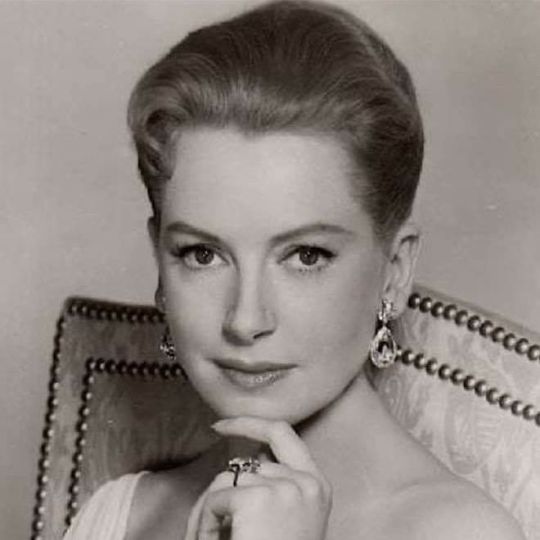

Propaganda
Deborah Kerr (Bonjour Tristesse, An Affair to Remember, The King and I)— For several decades she held the record for most Oscar nominations without a win (6 in total), and she was a prolific leading lady throughout the 40s and 50s. She's best known today for the romance An Affair to Remember with Cary Grant, and as the governess in The King and I. Many people have this erroneous perception of her as extremely prim, proper, and virginal, but this could not be further from the truth. When she first came to Hollywood under MGM she was typecast into boring decorative roles, but broke sexual boundaries for herself and Hollywood generally in From Here to Eternity, when she made out (horizontally!) with Burt Lancaster (on top of him!) in the famous Beach Scene. She went on to play many sexually conflicted women, a character type that would define most of her post- Eternity work. She continued to break Hays Code boundaries with Tea and Sympathy, which addresses homosexuality/homophobia head-on, and even did a topless scene in The Gypsy Moths 1969!! One of the only classic stars to do so. She deserves a more nuanced and frankly a hotter legacy than she currently has!!!
Devika Rani (Achhut Kanya)—She was grandniece of Rabindranath Tagore (laureate). She was sent to boarding school in England at age nine and grew up there. After completing her schooling, she joined the Royal Academy of Dramatic Art (RADA) and the Royal Academy of Music to study acting and music, at a time when aristocratic women did not enter showbiz. She studied filmmaking in Berlin. It is well known that she underwent training at the UFA Studios in the art and technique of acting under Eric Pommer, and other aspects of film production including costume and set designing and make-up, under eminent directors like GW Pabst, Fritz Lang, Emil Jannings and Josef von Sternberg. She is also reported to have worked with Marlene Dietrich. She had a multi-faceted personality and took on many responsibilities of film production at Bombay Talkies, a studio that she co-founded with Himanshu Rai in Mumbai in 1934. She often took care of hair and make up, supervised set design and editing, scouted for new talent and mentored them. She was the face of Bombay Talkies, and also the reason behind the political and financial backing the studio received, at a time when even women from red light districts refused to work as actresses. She was the first recipient of the Dadasaheb Phalke Award, when it was instituted in 1970.
This is round 3 of the tournament. All other polls in this bracket can be found here. Please reblog with further support of your beloved hot sexy vintage woman.
[additional propaganda submitted under the cut.]
Deborah Kerr:

I think she was one of my first crushes before I realised I was bi in The King and I when I watched it as a kid honestly. The kissing scene in From Here to Eternity is iconic for a reason. Actually tried to learn the accents for the characters she was playing if they weren't English which is more than pretty much anyone else was doing then. Played very restrained characters who frequently seemed to be desperate not to be so restrained. Did horror movies without venturing into hagsploitation tropes. Gave Marni Nixon the credit she deserved for her share of the singing in The King and I.
Anne Larsen is a peak late 1950s bisexual with big MILF energy. Have you seen the behind the scenes pics of her wearing a suit?? Have you????? Vote Deb as Anne Larsen.
Nominated for an Oscar six (6) times and never won, but besides her having actual talent (hot), and besides her looking Like That (very hot, also beautiful), she was always playing women who are, like, crazy repressed. Which makes it fun and easy for me to read these characters as queer. Icon!!!! You know what's hot? Playing ambiguously gay in vintage Hollywood.

Her face and talent and body, yes, ofc, duh. But also!!! Her HANDS!!!! I may be but a simple lesbian, but she is the best hactor (hand actor) that ever lived and that's HOT! For propriety's sake I feel I must redact a large portion of my commentary on this subject. Anyway. She's hot in her most famous roles (mentioned above), and also some of her sexiest hacting is on display in An Affair to Remember (her hand on the bannister when Cary Grant kisses her off-screen??? HELLO???), Tea and Sympathy (when she's trying to persuade Tom not to go out and she keeps flexing her hands like she wants to reach out to him but can't??? ALLY BEHAVIOR! WE STAN!), and The Innocents (which opens and closes with extended shots of her hands bc director Jack Clayton was also an ally and he did that for ME). Much of her appeal also lies in the fact that she often played deeply repressed characters and you know what's hot? When those uptight characters finally unravel. It's sexy. It's cathartic. It's erotic. Plus, she's beautiful to look at in both black & white and technicolor, and the more of her films you see, the more you can't help but fall in love!

Literally is in thee most famously sexy scene of all time (or maybe just during the hays code era which is what we're talking about HELLO), which is the beach scene with Burt Lancaster in from here to eternity. To quote a tumblr post of a screen capture of a tweet of a video of joy behar on the view: "y'know, there used to be movies where they were kissing on the beach... From Here to Eternity. They're kissing-- Burt Lancaster and Deborah Kerr are Kissing on the Beach and then the WAVES crash!! You know exactly what they did!"

She might have a reputation of being chaste and virginal or whatever, but we all know it's the quiet ones who are certifiable FREAKS

Devika Rani:
Achhut Kanya (1936) is the only one of hers I've seen but hot DAMN

246 notes
·
View notes
Text

SOPHIA LOREN
Sofia Costanza Brigida Villani Scicolone OMRI born 20 September 1934), known professionally as Sophia Loren is an Italian actress, active in her native country and the United States. With a career spanning over 70 years, she was named by the American Film Institute as one of the greatest stars of classical Hollywood cinema.
Encouraged to enroll in acting lessons after entering a beauty pageant, Loren began her film career at age 16 in 1950. She appeared in several bit parts and minor roles in the early part of the decade, until her five-picture contract with Paramount in 1956 launched her international career. Her film appearances around this time include The Pride and the Passion, Houseboat, and It Started in Naples. During the 1950s, she starred in films as a sexually emancipated persona and was one of the best known sex symbols of the time.
Loren's performance as Cesira in the film Two Women (1960) directed by Vittorio De Sica won her the Academy Award for Best Actress, making her the first actor to win an Oscar for a non-English-language performance. She holds the record for having earned seven David di Donatello Awards for Best Actress: Two Women; Yesterday, Today and Tomorrow (1963); Marriage Italian Style (1964, for which she was nominated for a second Oscar); Sunflower (1970); The Voyage (1974); A Special Day (1977) and The Life Ahead (2020). She has won five special Golden Globes (including the Cecil B. DeMille Award), a BAFTA Award, a Laurel Award, a Grammy Award, the Volpi Cup for Best Actress at the Venice Film Festival and the Best Actress Award at the Cannes Film Festival. In 1991, she received the Academy Honorary Award for lifetime achievements.
7 notes
·
View notes
Text
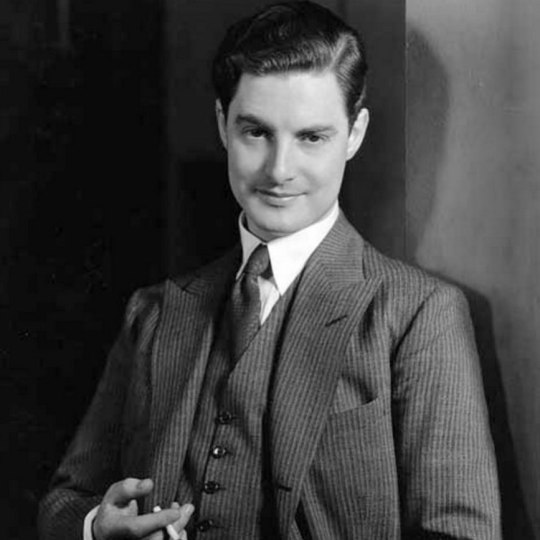
Although narrow striped suits are much less common than the wide ones, they maintain an interesting place in a gentleman’s wardrobe for their less formal look and the capability of donating to the wearer a touch of relaxed elegance. In the image from 1934 we can admire Robert Donat (1905-1958), the great British actor of the golden age of Hollywood, wearing a beautiful narrow striped single breasted three piece flannel suit in a peak lapel configuration. Although suffering from a serious form of chronic asthma, he could win an Academy Award for his portrayal in ‘Goodbye Mr.Chips’ , the 1939 movie directed by Sam Wood. In 1953, the Old Vic Theatre in London invited him to play the part of Becket in a new production of the Eliot’s verse drama ‘Murder in the Cathedral’. This Donat’s performance re-launched his stage career and is widely regarded as his finest role, that allowed him to receive the longest ovation in the Old Vic’s history.
The Daily Telegraph critic, Campbell Dixon, called “A voice of magical charm and effortless authority which only a clod could hear unmoved.”
8 notes
·
View notes
Text
Myrna Loy - The Queen of Hollywood
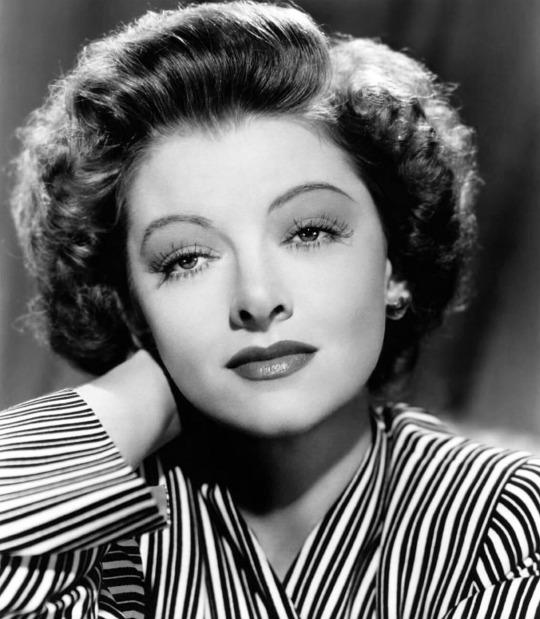


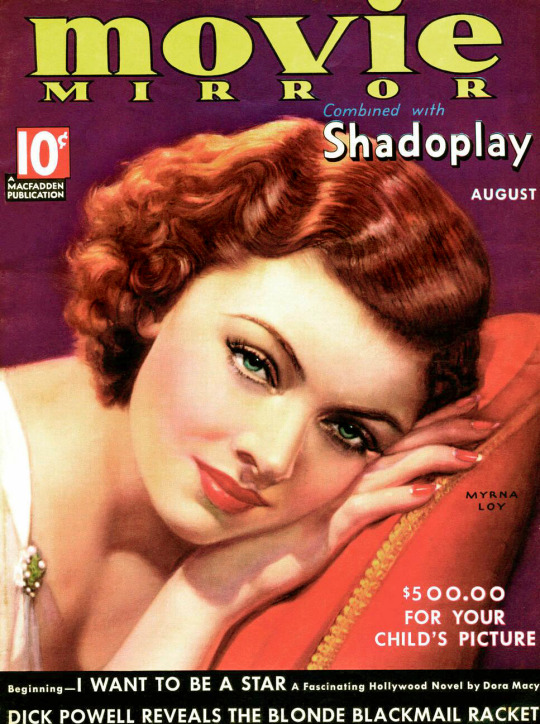



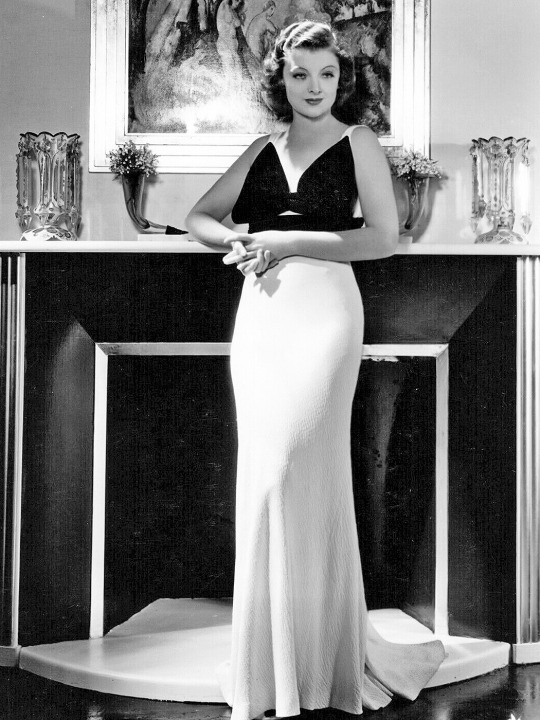
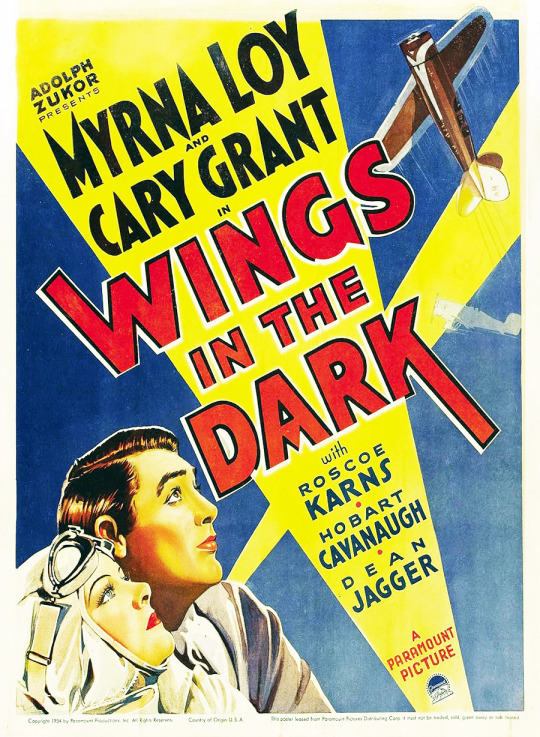



Myrna Loy (born Myrna Adele Williams in Helena, Montana on August 2, 1905 ) was an American actress who reigned as one of America’s leading movie stars in the 1930s and the 1940s. Millions of fans idolized her as ‘the perfect wife,’ a paragon of charm, sophistication and intelligence, earning her the title as "The Queen of Hollywood."
Of Welsh, Scottish, and Swedish ancestry, Loy moved to Culver City in her early teens. She first attended the exclusive Westlake School for Girls. When her teachers objected to her extracurricular participation in theater, her mother enrolled her in Venice High School.
To help the family, she wroked at Grauman's Egyptian Theatre, where she performed in prologues, musical sequences that served as preliminary entertainment before the feature film. This led to work as an extra in Hollywood productions in 1925 and then a contract with Warner Bros. in 1926.
With the advent of sound films, she then became associated with musicals, and when they began to lose popularity, her career slumped. In 1934, after Loy's move to MGM, John Dillinger was shot to death after leaving a screening of her film Manhattan Melodrama (1934). She received widespread publicity, with some newspapers reporting that she had been Dillinger's favorite actress.
Loy gained further fame from the box office hit, The Thin Man (1934), which spawned five sequels. This marked a turning point in her career, and she was cast in more important pictures and became one of Hollywood's busiest and highest-paid actresses,
With the outbreak of World War II, Loy focused on the war effort, becoming an active member of the Hollywood Chapter of 'Bundles for Bluejackets,' helping run a Naval Auxiliary Canteen, going on fundraising tours, and volunteering for the Red Cross.
In the coming decades, she continued acting alongside her activism work. She organized opposition to the House Unamerican Activities Committee in Hollywood through radio broadcasts and petitions, worked with the federal government, and served in UNESCO.
In 1975, Loy was diagnosed with breast cancer and underwent two mastectomies. She kept her diagnosis and subsequent treatment from the public. This resulted in her progressive retirement from acting; her last film performance was in 1980 and her last acting role on TV in 1982.
In failing health, Loy died at age 88 in a Manhattan hospital during surgery following a long, unspecified illness.
Legacy:
Received an Honorary Academy Award in 1991 in recognition of her life's work both onscreen and off
Bears the likeness of the 7-foot statue outside Venice High School, titled 'Inspiration," created in 1922 and has since become a symbol of the school and the community
Has a building named after her at Sony Pictures Studios, formerly MGM Studios, built in 1935
Named Queen of the Movies in a 1936 national poll by New York Daily News
Honored with a block in the forecourt of Grauman's Chinese Theatre in 1936
Listed by the Motion Picture Herald as one of America’s top-10 box office draws in 1937 and 1938
Served as the full-time assistant to the director of military and naval welfare for the Red Cross from 1941 to 1945
Became a member-at-large of the U.S. National Commission for UNESCO from 1949 to 1954, the first Hollywood celebrity to do so
Has been the namesake of Venice High School's annual speech and drama awards, the 'Myrnas' since 1953
Served as Co-Chair of the Advisory Council of the National Committee against Discrimination in Housing from 1961 to 1962
Became a founding board member of The American Place Theatre in 1963
Commemorated with a cast of her handprint and her signature in front of Theatre 80, on St. Mark's Place in New York City in 1971
Appeared in John Springer's "Legendary Ladies" series at The Town Hall in 1973
Presented with the 1979 Career Achievement Award by the National Board Review
Honored by the Los Angeles Film Critics Association Awards in 1983 with the Career Achievement Award
Published an autobiography, Myrna Loy: Being and Becoming, in 1987
Was the winner of the 1988 Kennedy Center Honors
Honored by the Steel Pole Bath Tub with a song on their 1991 album Tulip that is both named after Loy and samples dialogue from one her film, The Thin Man Goes Home (1945).
Named by The Guardian named her one of the best actors never to have received an Academy Award nomination in 1991
Has been the namesake for The Myrna Loy Center for the Performing and Media Arts in downtown Helena since 1991
Honored as Turner Classic Movies Star of the Month for December 2016
Has a song named after her in Josh Ritter's 2017 album Gathering
Has a star on the Hollywood Walk of Fame at 6685 Hollywood Boulevard for motion picture
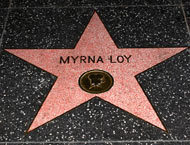
#Myrna Loy#The Queen of Hollywood#The Queen of Movies#Silent Films#Silent Movies#Silent Era#Silent Film Stars#Golden Age of Hollywood#Classic Hollywood#Film Classics#Classic Films#Old Hollywood#Vintage Hollywood#Hollywood#Movie Star#Hollywood Walk of Fame#Walk of Fame#Movie Legends#Actress#hollywood actresses#hollywood icons#hollywood legend#movie stars#1900s
4 notes
·
View notes
Photo

Jack Nicholson in One Flew Over the Cuckoo's Nest (Milos Forman, 1975)
Cast: Jack Nicholson, Louise Fletcher, Will Sampson, William Redfield, Brad Dourif, Sydney Lassick, Christopher Lloyd, Danny DeVito, Vincent Schiavelli, Scatman Crothers. Screenplay: Laurence Hauben, Bo Goldman, based on a novel by Ken Kesey. Cinematography: Haskell Wexler. Production design: Paul Sylbert. Film editing: Sheldon Kahn, Lynzee Klingman. Music: Jack Nitzsche.
One Flew Over the Cuckoo's Nest is beginning to show its age, as any 48-year-old movie must. It no longer exhibits the freshness that won it acclaim as a masterpiece and raked in the five "major" Academy Awards: picture, director, actor, actress, and screenplay -- only the second picture in history to do that: The first was It Happened One Night (Frank Capra, 1934), and only one other picture, The Silence of the Lambs (Jonathan Demme, 1991), has subsequently accomplished that feat. Today, however, One Flew has the look of a skillfully directed but somewhat predictable melodrama; its tragic edge has been blunted by familiarity. In treating the material, director Forman goes for straightforward storytelling, without showing us something new or personal as an auteur. And as time has passed, some of the elements of the source, Ken Kesey's novel, that screenwriters Laurence Hauben and Bo Goldman took pains to mitigate -- namely the countercultural glibness and antifeminism -- have begun to show through. It's harder today to wholeheartedly cheer on the raw, anarchic antiauthoritarianism of McMurphy (Jack Nicholson) or to accept as a given the unmitigated villainy of Nurse Ratched (Louise Fletcher). We want our protagonists and antagonists to be a little more complicated than the film allows them to be. There are still many who think it a great film, but if it is, I think it's largely because it's the perfect showcase for a great talent -- Nicholson's -- supported by an extraordinary ensemble that includes a shockingly young-looking Danny DeVito, Scatman Crothers, Sydney Lassick, Christopher Lloyd, Will Sampson, and a touchingly vulnerable Brad Dourif.
29 notes
·
View notes
Text
Famous stories of passing - Google Search

Yes it's exactly what it says. so go take a good look and see how this works.
seems a bit strange by some of the pics but then again with all the quilting we'd have to have dna to even try to understand
America in all it's hues


“Passing” Reflected in Three Films
December 3, 2021 | African American Movie Memorabilia, African Americana, Black History
The Netflex film Passing deals with the African American topic that has come to be known as “Passing” when a person classified as a member of a racial group is accepted or perceived (“passes”) as a member of another. Historically, the term has been used primarily in the United States to describe a person of color or of multiracial ancestry who assimilated into the white majority to escape the legal and social conventions of racial segregation and discrimination.”
These three films, Imitation of Life (1934), Pinky (1949) and Passing (2021) each deal with a Black woman, who, because of her light skin, passes for white and the ramifications that occur when that reality becomes a significant factor in her life.
IMITATION OF LIFE
The above poster: Np: Realart Pictures, 1949. Vintage original 41 x 27″ (104 x 69 cm.) one sheet poster. Conserved on linen, with minor touch ups at old fold lines, near fine.
The first of these film was a landmark film of the 1930s. Directed by John M. Stahl with a screenplay by William Hurlbut and eight additional writers, is based on Fannie Hurst’s 1933 novel of the same name. The film stared Claudette Colbert, Louise Beavers, Warren William, Rochelle Hudson, and Fredi Washington. The film was originally released by Universal Pictures and later re-issued in 1936. A 1959 remake with the same title was directed by Douglas Sirk.
Story
Two young women, one black, one white, both widowed with young daughters, come to live together and start a pancake business which eventually makes them wealthy. The young black girl, who is light-skinned, repeatedly tries to disappear into the while world, with tragic consequences.
Reception
This is the only Hollywood film of the 1930s which attempts to deal with the issues of race and racism: “The one film of the Depression to suggest that a contemporary race problem existed in America. It was also an unintentional comment on the exploitation of its African American character Delilah.” (Bogle, Hollywood Black, p. 40)
The themes of the film, to the modern eye, deal with very important issues—passing, the role of skin color in the black community and tensions between its light-skinned and dark-skinned members, the role of black servants in white families, and maternal affection.
Consequence
In 2005, Imitation of Life was selected for preservation in the United States National Film Registry being deemed “culturally, historically, or aesthetically significant”. It was also named by Time in 2007 as one of “The 25 Most Important Films on Race”. The film was nominated for Best Picture, Best Assistant Director and Best Sound Recording, at the 7th Academy Awards.
PINKY

Pinky Is a 1949 American drama film directed by Elia Kazan and produced by Darryl F. Zanuck, from a screenplay by Philip Dunne and Dudley Nichols, based on Cid Ricketts Sumner’s 1946 novel Quality. It stars Jeanne Crain as the title character, a young light-skinned black woman who passes for white. It also stars Ethel Barrymore, Ethel Waters and William Lundigan.
Story
Pinky is a black woman so fair-skinned she was able to pose as white throughout nursing school. Newly graduated, she flees south to visit her grandmother after a doctor, unaware of her true ancestry, proposes to her.
Unsure how to react, she looks to her grandmother, who warns her that only trouble will come of an interracial marriage. Pinky agrees and instead stays to help her grandmother care for an elderly, rich, and fatally ill white woman, who dies and, to the horror of the white community, leaves her stately home and property to Pinky. Rejecting the entreaty of the doctor who proposed to her, she remains in the community and establishes “Miss Em’s Clinic and Nursery School”
Reaction
Pinky was released theatrically in the United States on September 29, 1949 by 20th Century-Fox. It generated considerable controversy due to its subject of race relations and its casting of Crain to play a black woman. It was nonetheless a critical and commercial success, and earned Crain, Barrymore and Waters Academy Award nominations.
PASSING

Passing, the novel, is by American author Nella Larsen, first published in 1929. Set primarily in the Harlem neighborhood of New York City in the 1920s, the story centers on the reunion of two childhood friends—Clare Kendry and Irene Redfield—and their increasing fascination with each other’s lives. The title refers to the practice of “racial passing,” and is a key element of the novel. Clare Kendry’s attempt to pass as white for her husband, John (Jack) Bellew, is a significant depiction in the novel and a catalyst for the tragic events.
Passsing, the film is a 2021 black-and-white drama film written, produced, and directed by Rebecca Hall in her feature directorial debut. … The film stars Tessa Thompson, Ruth Negga, André Holland, Bill Camp, Gbenga Akinnagbe, Antoinette Crowe-Legacy, and Alexander Skarsgård.
The film follows the book’s storyline: Mixed-race childhood friends reunite in middle class adulthood and become increasingly involved in each other’s lives and insecurities. While Irene identifies as African-American and is married to a Black doctor, Clare “passes” as white and has married a prejudiced, wealthy white man. This renewed acquaintance ignites a mutual obsession that threatens both of their carefully constructed realities.
#Famous stories of passing - Google Search#African-American Memorabilia#Black Memorabilia#Original Vintage Movie Posters#Passing for White#“Passing” Reflected in Three Films
3 notes
·
View notes